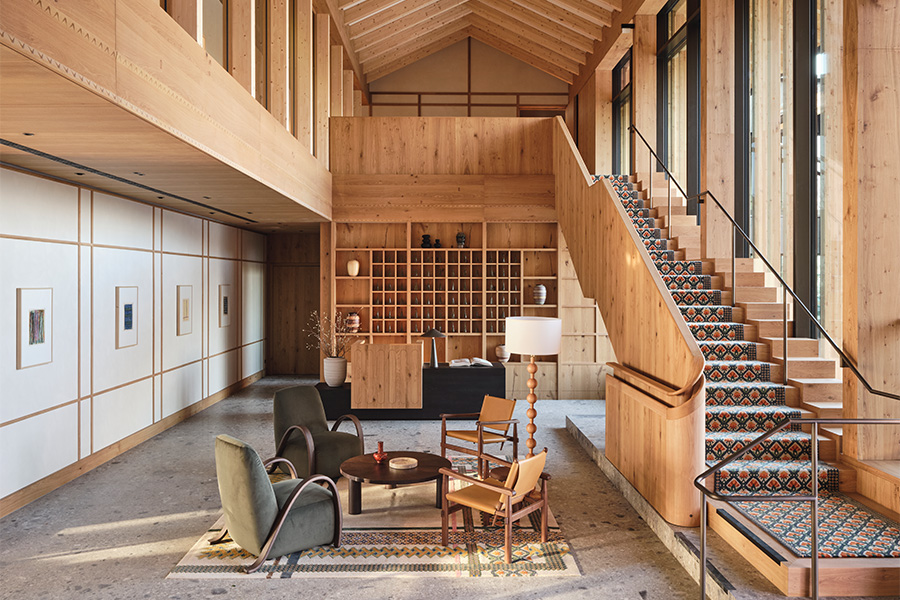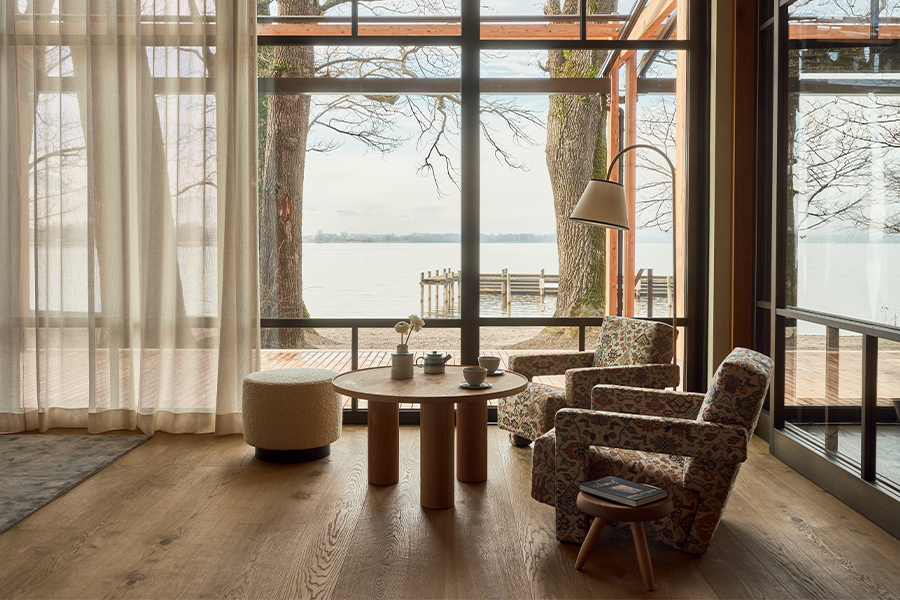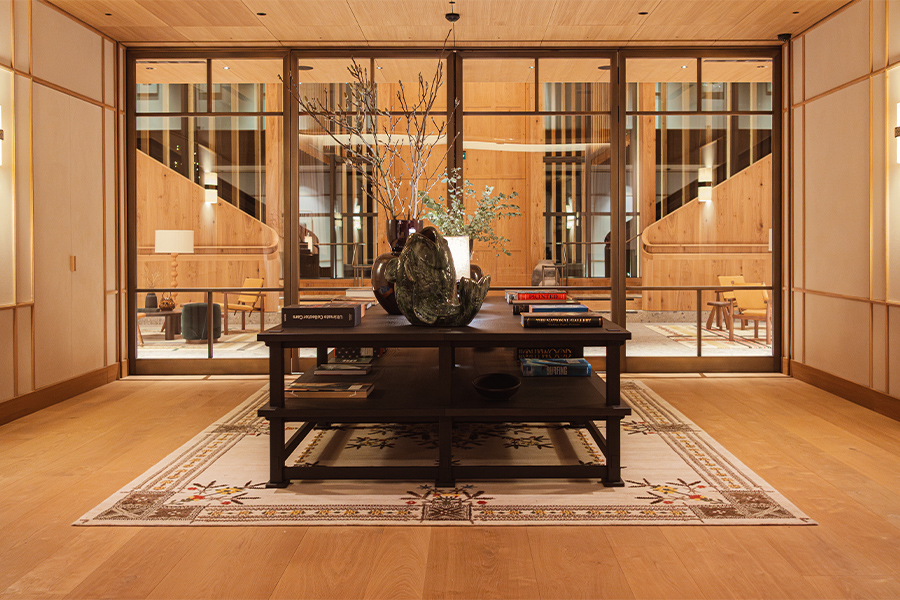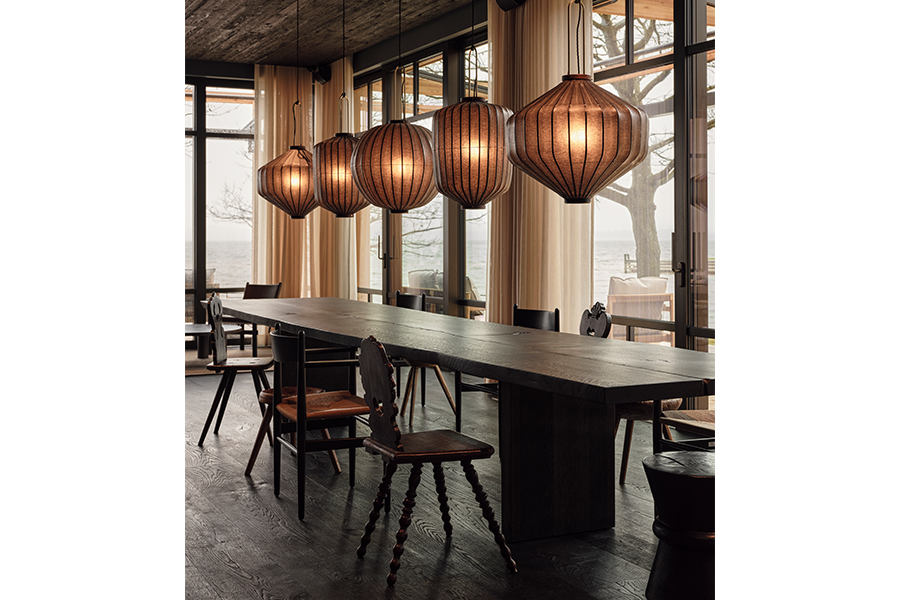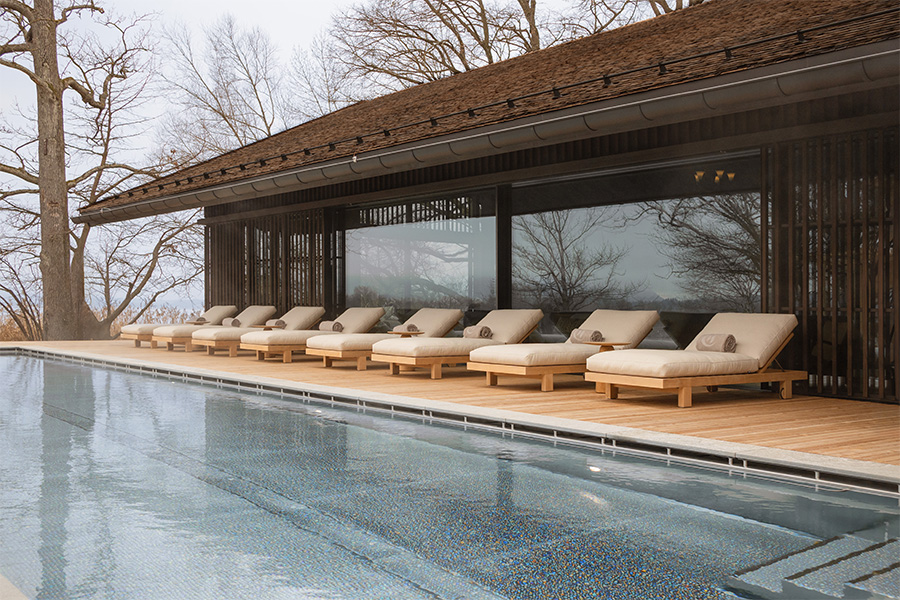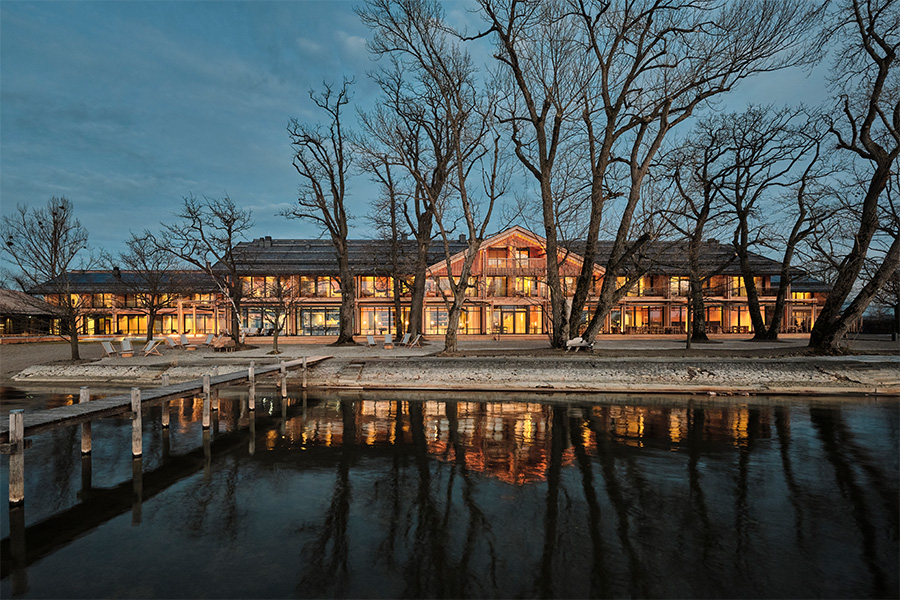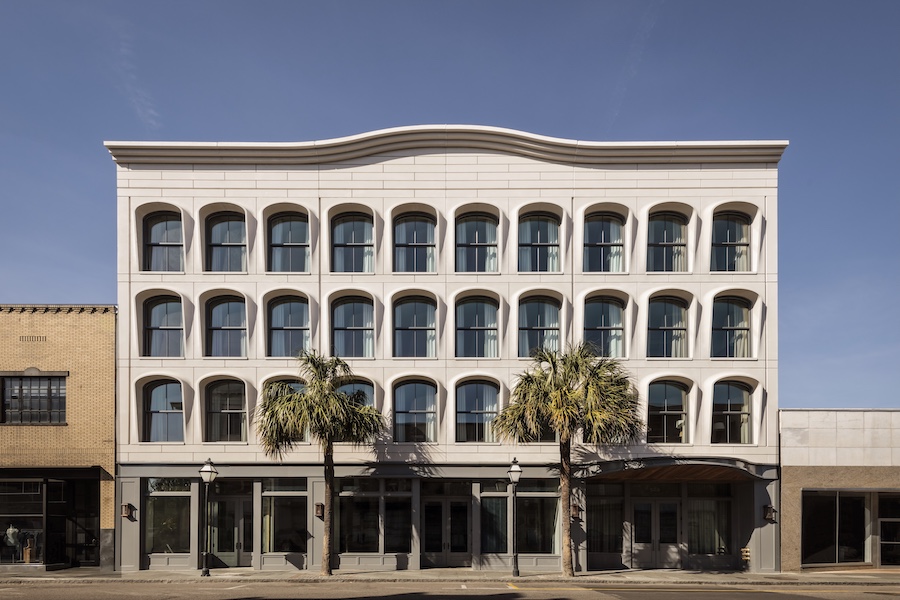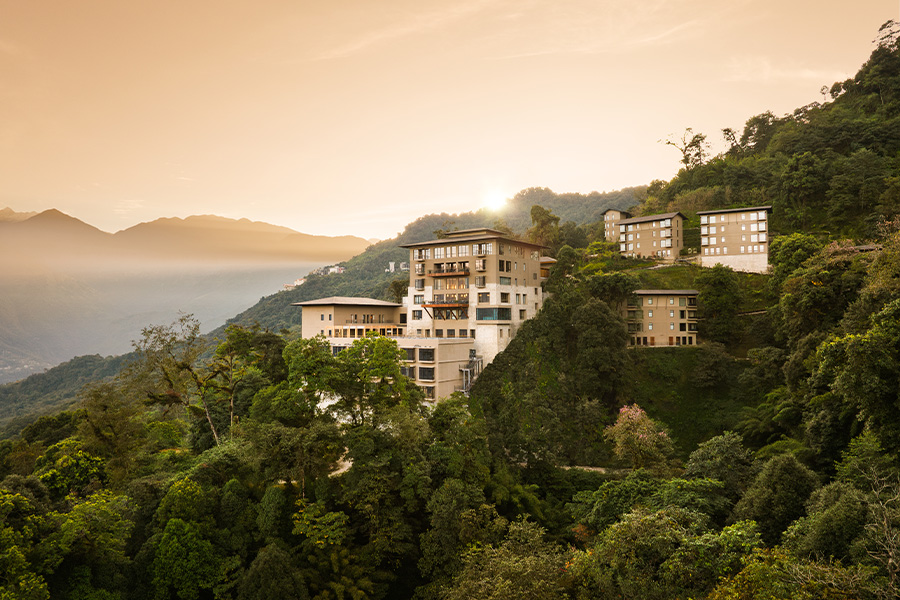Designer Matteo Thun first encountered Germany’s Chiemsee lake, also known as the Bavarian Sea, as a surfer. After eyeing an old rundown building, he hatched an idea that would share his personal escape with the world while preserving its ecosystem.
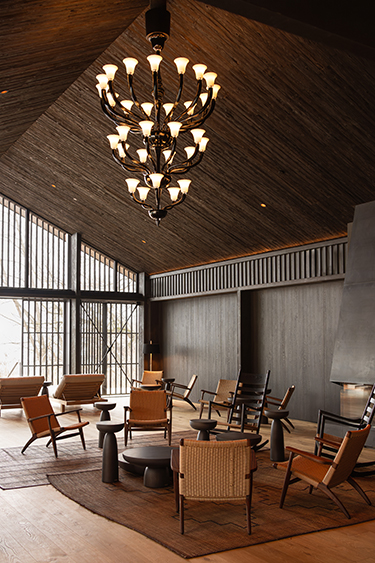 The result is Chiemgauhof Lakeside Retreat, a series of wooden sheds and barns that correspond with the original Alpine architecture of the prior building. “With every project, we are looking for luxury that matches the location,” says Thun, founder of his eponymous studio Matteo Thun & Partners. “And so, the retreat is designed with respect to the soul of the area.”
The result is Chiemgauhof Lakeside Retreat, a series of wooden sheds and barns that correspond with the original Alpine architecture of the prior building. “With every project, we are looking for luxury that matches the location,” says Thun, founder of his eponymous studio Matteo Thun & Partners. “And so, the retreat is designed with respect to the soul of the area.”
The property comprises three wooden buildings connected by gardens and patios. The central building houses the lobby and F&B options while the other two are home to the 28 guestrooms and suites. Just outside the interconnected buildings is the Bootshaus (or “boathouse”), which doubles as a larger event space.
Sustainability was top of mind during construction, with the team primarily sourcing natural materials and regional woods. Central heating and warm water are provided by biomass pallets, while photovoltaic panels have been integrated into the roof and covered with larch shingles to save energy and reduce climate-damaging emissions. Larch wood is also used on the façades to resemble the agricultural buildings found in the surrounding area. Meanwhile, Austrian spruce wood was used for the walls and roof trusses. “Over time, nature will give the entire hotel a beautiful patina,” Thun adds.
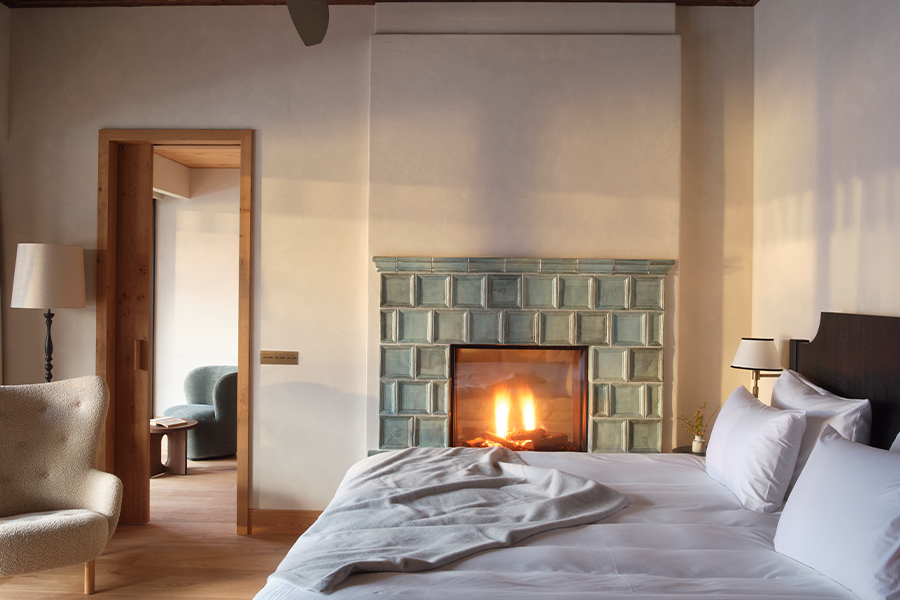
That story continues in the guestrooms, which are characterized by wooden wall paneling, oak flooring and cabinets, wood furniture, freestanding bathtubs, and Bavarian-style alcove beds and carved doors—not to mention locally made handwoven recycled carpets and sheep’s wool blankets. All the guestrooms come with a view of the lake “ensuring that the sunset over the Bavarian Sea is an extraordinary experience,” says Thun. The suites further immerse guests within the idyllic setting. The Corner suites, for one, feature panoramic windows, while the Garden suites boast direct lake access and the Chiemsee Royal suites offer two levels of space.
The hotel’s public spaces, meanwhile, include a bar, lounge, salon, restaurant, spa, and yoga/fitness area. Among the highlights is a tiled stove in the lounge that doubles as an art piece titled Contemporary Bavarian, which is laid with tiles from the Kampfleuthner pottery workshop on Frauenchiemsee island.
Differing from the rest of the property’s aesthetic, however, is the Bootshaus, located directly on the jetty overlooking the lake. “Here, Bavaria meets Japan,” Thun explains. Its dark outer shell is made of flamed wood while the interior features a large metal and stone fireplace and fabrics that recall Japanese lanterns. The building also opens out to an 18-meter-long pool and garden that keep Chiemsee front and center. “The lake is the protagonist,” he adds, “and the architecture, in its simplicity, is the stage.”
